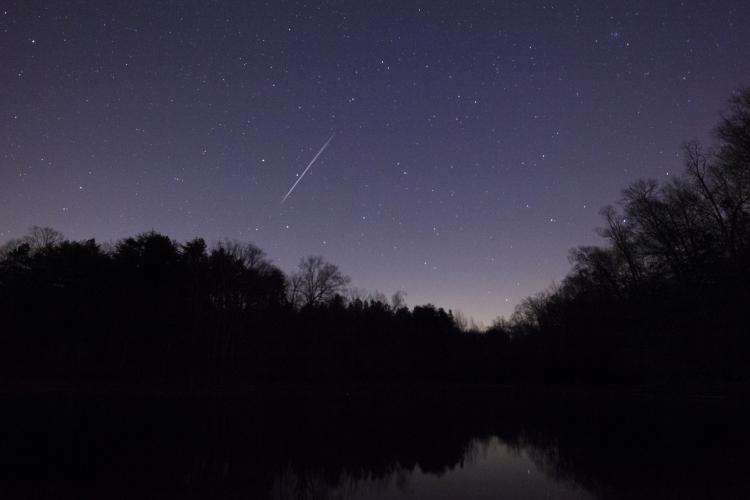Sky watchers will be in for a bit of a treat the early weeks of December as the Geminid meteors will peak on the night of December 13/14. Since it is an annual meteor shower, there is always next year if the weather does not cooperate. This year’s Geminids will peak during a waxing crescent moon that will set by 8 pm, making a good year for those who wish to watch he meteors before midnight.
Meteor showers are named after the constellation from which they appear to emanate. If you trace back the path of the meteors in a meteor shower, they all point back to a certain spot on the sky. The constellation where the spot is located gives the meteor shower its name. A meteor is just a dust particle burning up in the atmosphere. They all appear to come from the same direction due to an optical illusion similar to the way railroad tracks that are running next to one another appear to meet in the distance. In the case of the Geminids, the meteors appear to be coming from the constellation Gemini, the Twins, near the two bright stars Castor and Pollux at the head of the Twins.
The Geminid meteors result when the Earth passes through the debris of the asteroid 3200 Phaethon that was discovered using the Infrared  Astronomical Survey (IRAS). 3200 Phaethon, may be an extinct comet, and it is thought that the meteor stream was created when the asteroid was struck by another object ejecting debris into space. This is unusual since most meteors showers occur when the Earth passes through the debris of a comet. The Geminids were first noticed in 1862, and seem to be increasing in number each year. The peak of the shower is very short and last only a few days. The particles themselves have had orbital studies performed, confirming their unusual origin from an asteroid rather than a comet. Earth and Jupiter seem to be slowly modifying the particle’s orbits.
Astronomical Survey (IRAS). 3200 Phaethon, may be an extinct comet, and it is thought that the meteor stream was created when the asteroid was struck by another object ejecting debris into space. This is unusual since most meteors showers occur when the Earth passes through the debris of a comet. The Geminids were first noticed in 1862, and seem to be increasing in number each year. The peak of the shower is very short and last only a few days. The particles themselves have had orbital studies performed, confirming their unusual origin from an asteroid rather than a comet. Earth and Jupiter seem to be slowly modifying the particle’s orbits.
From a dark location you can normally see about two or three random meteors per hour; predictions for the Geminids this year suggest up to 50 meteors per hour. One advantage of the Geminid meteors is that the constellation Gemini is visible from sunset to sunrise for northern observers and so the meteors can be watched all night. Keep an eye on the sky for meteors December 6th through to the 18th.



